documenta fifteen
Community as a Southern notion
Jakarta-based artists’ collective ruangrupa is the artistic team of the fifteenth edition of documenta taking place from 18 June to 25 September 2022 at 32 venues in Kassel, Germany. They are the first art collective to curate documenta and never before has art as social practice, especially emerging from the Global South, been such a central focus within this major international event. The collective has built the foundation of their documenta on the core values and ideas of lumbung; Indonesian term for a communal rice barn. lumbung as an artistic and economic model is rooted in principles such as collectivity, communal resource sharing, and equal allocation. This term set the tone for their approach to collaboration for this edition, as well for artists’ and collectives’ contributions, enabling presentations to move beyond simply displaying artworks. This poses an important interjection into how the curatorial can be formulated in large scale, international art moments.
This edition has been one of the most controversial, with a series of clashes taking place before the exhibition had opened, reaching a crescendo with a work being removed on the grounds of antisemitism. These events have been widely reported on and the documenta artistic team, as well as the artists involved, have made statements addressing the situation and the content and removal of the work, which can be accessed here. The unfolding of these specific events will no doubt lead to a series of critical conversations, which the artistic team are encouraging, and will certainly have an impact on future editions of the major event.
These incidents have perhaps overshadowed an astoundingly expansive exhibition that was intended to be hopeful, humorous and offer innovative solutions to real problems, blurring the lines between art and politics. It shines a light on collaboratives of the Global South with collectives across regions that have a similar underlying method, perspective and attitude towards art making, art sharing and community. Below highlights seven Global South-based collectives, taken from both the core lumbung collectives and others invited to contribute to documenta.

documenta fifteen: Fridskul Common Library, Fridericianum, Kassel, June 17, 2022, Photo: Victoria Tomaschko
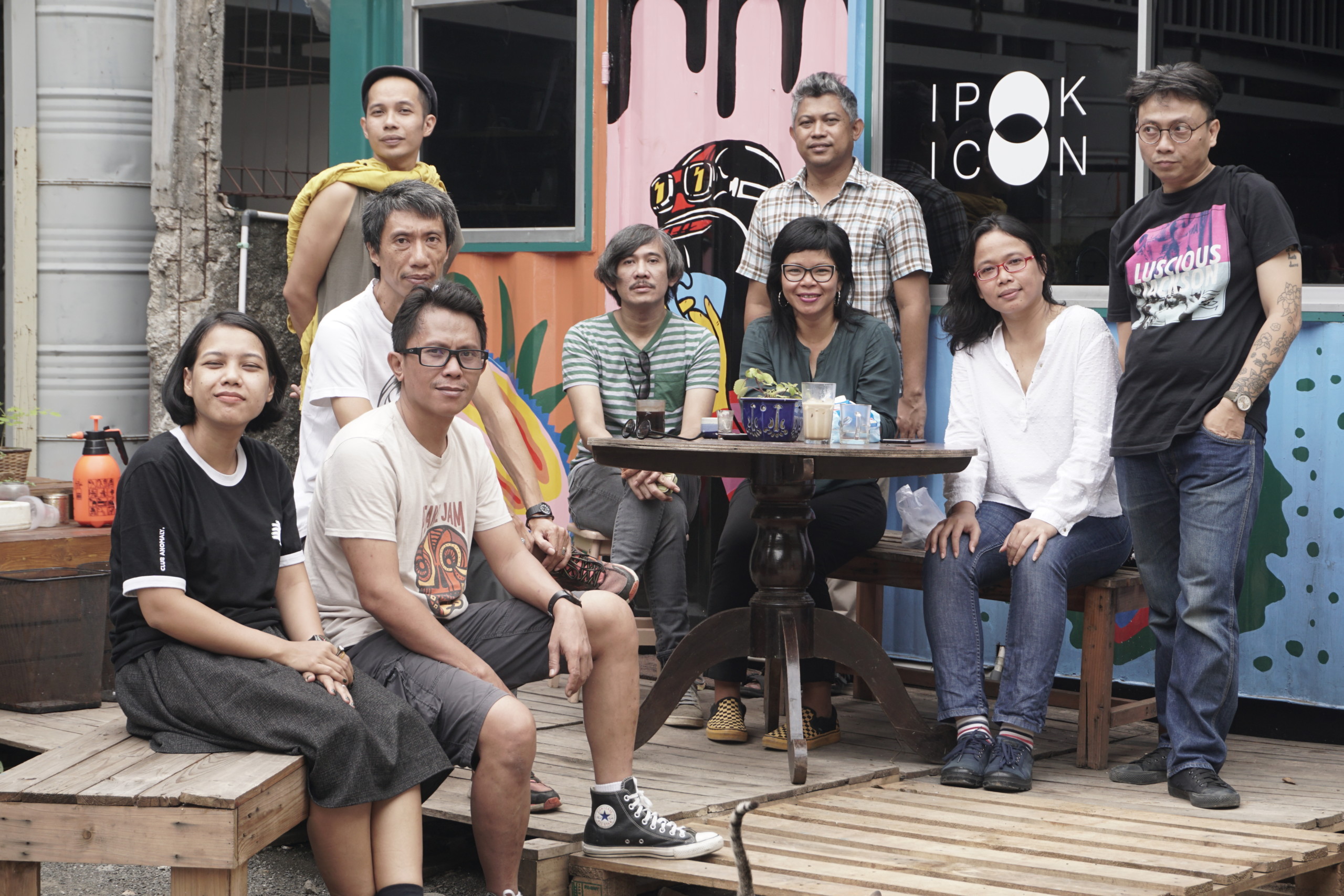
ruangrupa, f.l.t.r. Ajeng Nurul Aini, farid rakun, Iswanto Hartono, Mirwan Andan, Indra Ameng, Daniella Fitria Praptono, Ade Darmawan, Julia Sarisetiati, Reza Afisina, 2019, Photo: Jin Panji
Molemo Moiloa and Nare Mokgotho make up the Johannesburg-based interdisciplinary artist collaboration MADEYOULOOK. At the foundation of their work is the everyday practices of Black people that have historically been overlooked or considered insignificant. Through a re-examination of everyday urban life in South Africa, they introduce a sense of newness to the practices, giving them the opportunity to be re-read as important and exposing societal frameworks. Community interaction is at the centre of their work, with installations, gatherings, discursive programmes, research and publications as their forms of articulation with projects often manifesting outside gallery spaces. For documenta MADEYOULOOK consider how we manage space and how space manages us. Their project is a terraformation: a modification of a surface to rethink and re-experience how we inhabit the world. They produced an undulating floor made of variable shifting heights, an anti-ergonomic exercise that refuses efficiency and comfort, that activates discomfort or unease as a trigger to re-evaluate the body’s complacency. Moiloa and Mokgotho seek to “interrupt” a perverse economy, designed to render Black life aberrant.
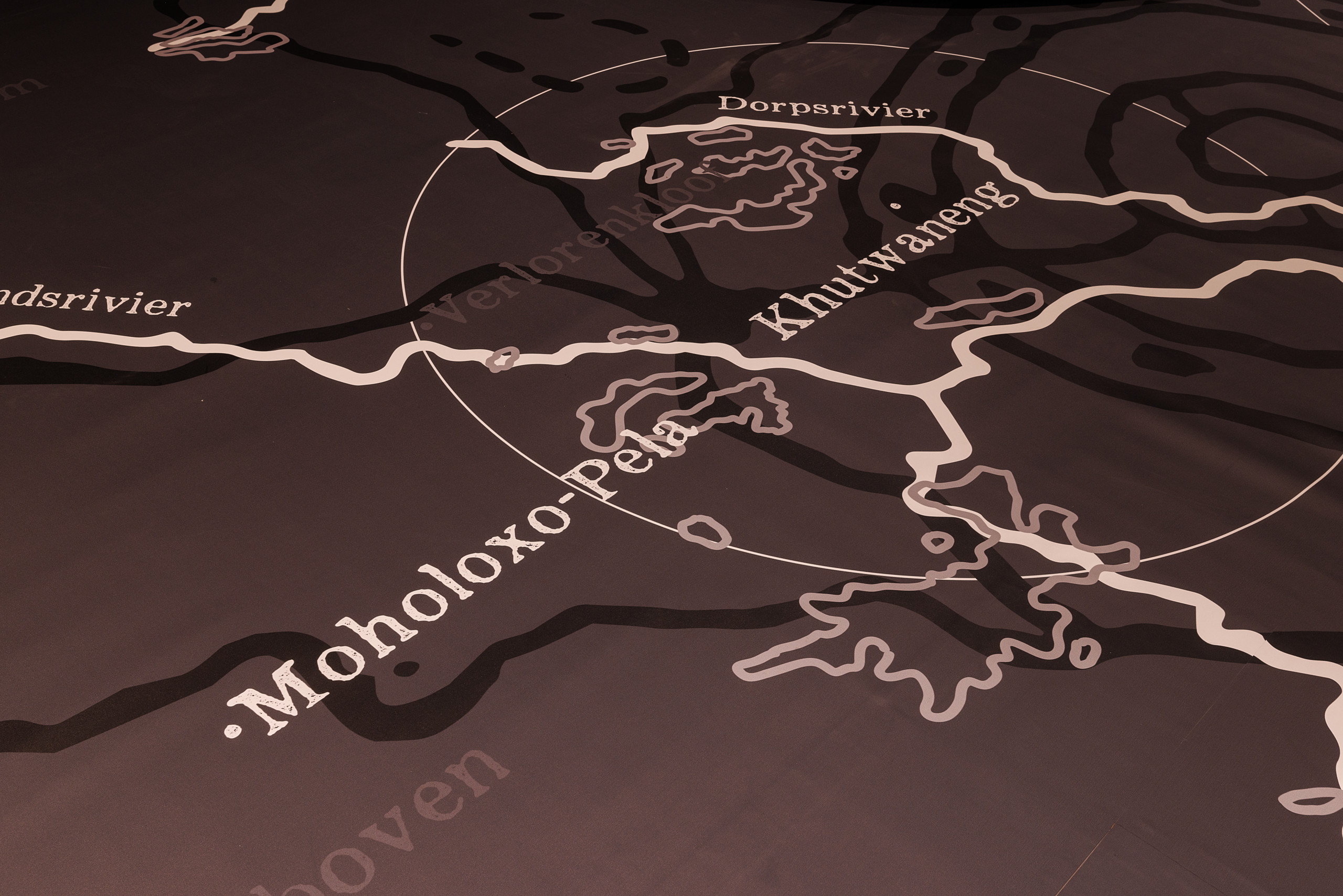
documenta fifteen: MADEYOULOOK, Mafolofolo, 2022, installation view (detail), Hessenland, Kassel, June 15, 2022, photo: Frank Sperling
Community interaction is at the centre of their work, with installations, gatherings, discursive programmes, research and publications as their forms of articulation with projects often manifesting outside gallery spaces.

documenta fifiteen: : MADEYOULOOK, Mafolofolo, 2022, installation view, Hessenland, Kassel, June 14, 2022, Photo: Frank Sperling
Baan Noorg Collaborative Arts and Culture (Baan Noorg บ้านนอก; noun – country; countryside; rural area; upcountry) is a non-profit and artist-run initiative that focuses on community development and also exists as a service-provider for artistic practice. It is located in the Nongpho district, Ratchaburi, in Thailand and was founded by jiandyin (Jiradej Meemalai and Pornpilai Meemalai) in 2011, with jiandyin, Lo Shih Tung, Hsu Chia Wei and Sakarin Krue-On as its board of committees. Exchange, co-existence, cross-disciplinary collaboration and supporting ecosystems are the core of the initiative’s impulses with an emphasis on sustainability. For documenta fifteen Baan Noorg have contributed a three-part project comprising a dairy farm exchange programme between a farm in Kassel and Nongpho in order to facilitate more sustainable practices, regular showings of Nang Yai (Thai shadow puppetry), and a skateboarding ramp in documenta Halle. Baan Noorg sees these interventions as dynamic, dialogical platforms that facilitate knowledge exchange between Kassel and Nongpho.

Baan Noorg Collaborative Arts and Culture, Skate to Milk: Baan Noorg to documenta fifteen, Nong Pho, 2022, Photo: Krittaporn Mahaweerarat
Exchange, co-existence, cross-disciplinary
collaboration and supporting ecosystems are the core of [Baan Noorg Collaborative Arts and Culture’s] impulses with an emphasis on sustainability.

documenta fifiteen: Baan Noorg Collaborative Arts and Culture, The Rituals of Things, 2022, installation view, Fridericianum, Kassel, June 13, 2022, Photo: Nicolas Wefers
Instituto de Artivismo Hannah Arendt (INSTAR) was born out of a collective artistic action in Havana, Cuba, when in May 2015 the artist and activist Tania Bruguera held a collective reading of Arendt’s The Origins of Totalitarianism (1951) in what are now INSTAR’s headquarters. For 100 hours, people recited and discussed Arendt’s classic study of totalitarian regimes, which speaks to Cuba’s current context. This action was the culmination of the #YoTambiénExijo campaign, which Bruguera initiated with a group of Cuban citizens in 2014–2015. They demanded transparency from the Cuban regime about conversations that established bilateral relations between Cuba and the United States during the terms of Raul Castro and Barack Obama, respectively. This action managed to gather the energy of 20 000 people and solidified the INSTAR’s existence between art and activism with its emphasis on collectivity and consensus introducing a model of institutionality that empowers expression. For documenta, INSTAR has organised a series of ten exhibitions with artists from Cuba that produce counter-narratives of Cuban art and history, installed between INSTAR’s headquarters in Havana and documenta Halle in Kassel. Each show displays a specific project or or practice in Cuba, aiming to give justice to artists and intellectuals censored by the Cuban government.
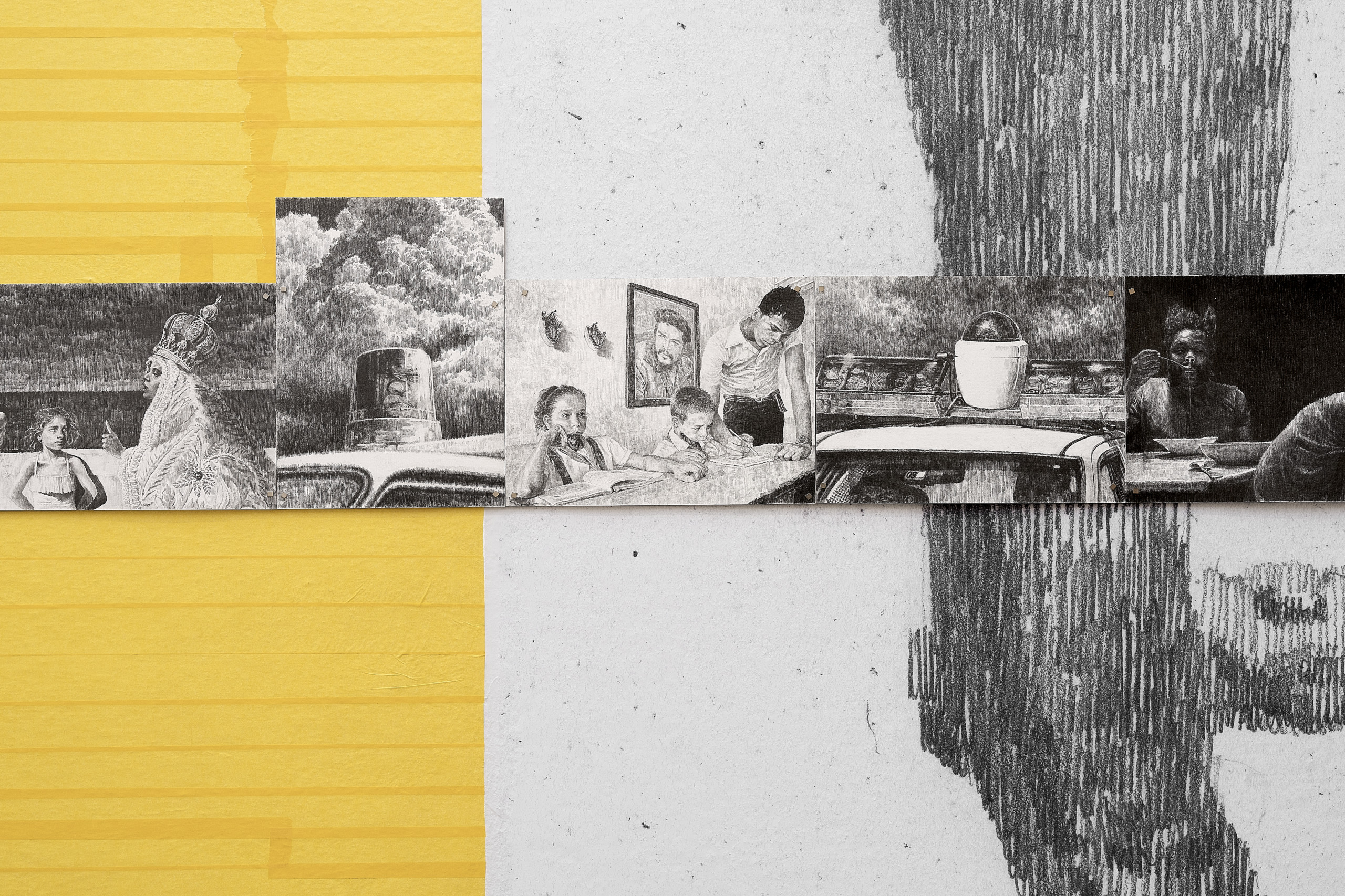
documenta fifiteen: Instituto de Artivismo Hannah Arendt (INSTAR), Raychel Carrión, 2020-2021, installation view (detail), Documenta Halle, Kassel, June 12, 2022, Photo: Nicolas Wefers
For documenta, INSTAR has organised a series of ten exhibitions with artists from Cuba that produce counter-narratives of Cuban art and history.
Also showing in documenta Halle is community-based organisation Wajukuu Art Project from the Mukuru slum in Nairobi, Kenya. The project was established in 2004 by a group of artists with the aim to make Mukuru a place where children can thrive and to create employment through the production and sale of quality artworks. Wajukuu provides art classes and platforms for those who live in the area to feel empowered. This includes a community library, the first in Mukuru, documentary screenings and mural painting addressing various social issues. Wajukuu Art Project contributes an architectural installation titled Killing Fear of the Unknown to documenta. Inspired by the Maasai Manyatta (traditional housing for the Maasai People of East Africa) and the informal aesthetics in the slums, this presentation includes multimedia expressions by Wajukuu-affiliated artists and physical artworks. Wajukuu’s participation in documenta fifteen culminates in a sustainability project, in which the collective will secure a permanent project space, financially empower members, and share insight and techniques in woodwork workshops.

Wajukuu Art Project, Slum Art Festival, Wajukuu, 2018, Photo: Shabu Mwangi
Wajukuu Art Project provides art classes and platforms for those who live in the area [Mukuru slum in Nairobi] to feel empowered.
Komîna Fîlm a Rojava (The Rojava Film Commune) is a collective of filmmakers based in the eponymous autonomous region in northern Syria. A lack of investment in the arts and the war in Syria compounded the loss of cinemas and those interested in the cinematic arts in Rojava. Since its inception the Commune has worked across the region to develop infrastructure for filmmaking, screening, and education, creating new audiences and an awareness of filmmaking as a medium for empowerment and a tool for liberation. For documenta fifteen, the collective has curated a programme of the Commune’s archival and recent films, as well as examples from Kurdish film history. The programme includes discussion panels with filmmakers and members of the commune and, in the Fridericianum, a video installation outlining the Rojava Film Academy as a model for alternative education.
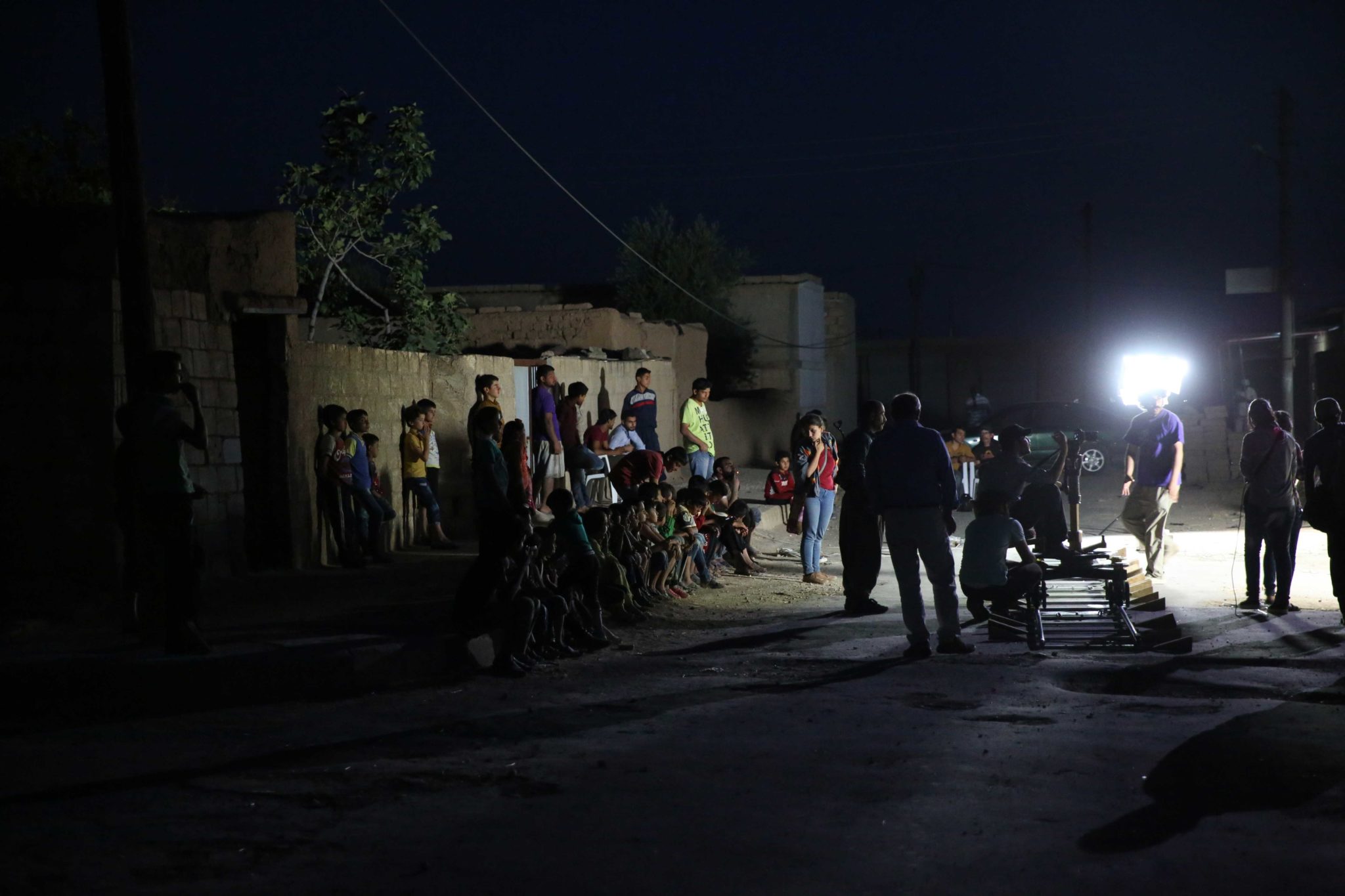
Komîna Fîlm a Rojava, filming Stories of destroyed cities, Derbesiye, 2016, photo: Nadia Derwish
Since its inception the Commune has worked across the region to develop infrastructure for filmmaking, screening, and education, creating new audiences and an awareness of filmmaking as a medium for empowerment and a tool for liberation.
The Black Archives are also showing in the Fridericianum. The historical archive collated by the collective is the legacy of Black Dutch writers, scientists, and activists, and consists of over 10 000 books, documents, photographs, audiovisual content and other materials about the history of people of Surinamese or African descent in the Netherlands. Importantly, these records concretise Black emancipation movements and individuals in the Netherlands. Through the archive the collective intends to inspire conversations, activities, and literature from Black and other perspectives that are often overlooked elsewhere. Collaboration, knowledge-sharing, building ecosystems and producing educational public programmes are at the heart of their activities. For documenta fifteen, The Black Archives demonstrate how they both collect and enact resistance. They are replicating a section of their book collection as well as parts of their exhibitions Facing Blackness (2022) and Black and Revolutionary: The Story of Hermine and Otto Huiswoud (2018). The latter reveals the hidden history of the Huiswouds’ courageous fight against colonialism, racism, and economic inequality, which they uncovered in their own collection. This installation also embodies their desire to raise awareness, to share materials and to invite conversations around decolonisation, intersectionality and anti-racism. Material can be copied, and donations are accepted. The Black Archives continue to build a community of activists with whom to reconstitute a collective memory and fight for human rights.

The Black Archives, collection of over 10.000 books and documents on colonialism, slavery, liberation and emancipation, Amsterdam, 2020, photo: The Black Archives
Importantly, these records concretise Black emancipation movements and individuals in the Netherlands.
Nhà Sàn Collective (NSC), an independent artist initiative, began operating as a collective in Hanoi in 2013 when a group of friends set up a publicly accessible space. With or without a physical base, NSC has worked with fellow companions and collaborators to organize exhibitions, workshops, film screenings, talks, and other activities as a support platform for artists in the community. The initiative wants to encourage exchange, expansion, and connection. The name Nhà Sàn pays homage to the collective’s foundation which is rooted in the spirit of Nhà Sàn Studio, an artist-run space founded in 1998 in Hanoi. The original Nhà Sàn, a house on stilts, was taken apart in 2020. In the Ngọc Thụy area in Hanoi, by the bank of the Red River, the artists imagine this house to become the new Nhà Sàn Collective space, rebuilt, and transformed. This sentiment is extended into their contribution to documenta. The collective traces a metaphorical connection from a Vietnamese bến (harbor) to the Fulda river. By the river in Kassel, two performance installations lay the foundation for the arrival of a playground installation, transporting the architectural materials, along with its community and their lived experiences. The collective also invites visitors to join them in cultivating a garden of migratory plants and narratives, joyful companionship inside a queer house with a sauna, offering haircuts, homemade wine and hosting discussions, workshops, as well as parties. Throughout the duration of documenta a series of events will take place in Ngọc Thuỵ, Hanoi, by the Red River, concluded by an open house party.
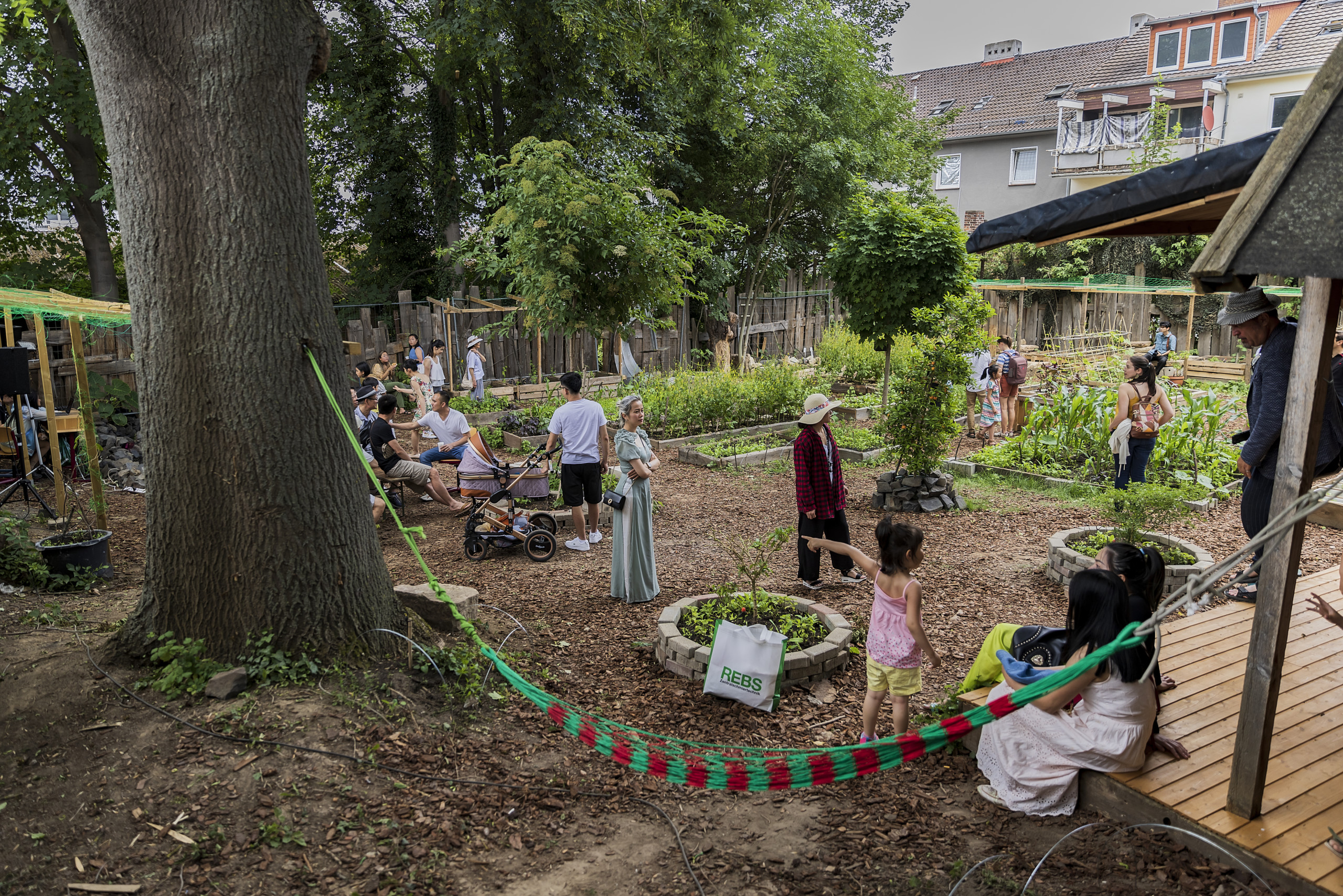
documenta fifteen, WH 22, Exterior View, Kassel, 2021, Photo: Nicolas Wefers.
Nhà Sàn Collective’s intervention is exhibited in this venue. Images of the installation coming soon.
Nhà Sàn Collective wants to encourage exchange, expansion, and connection.















